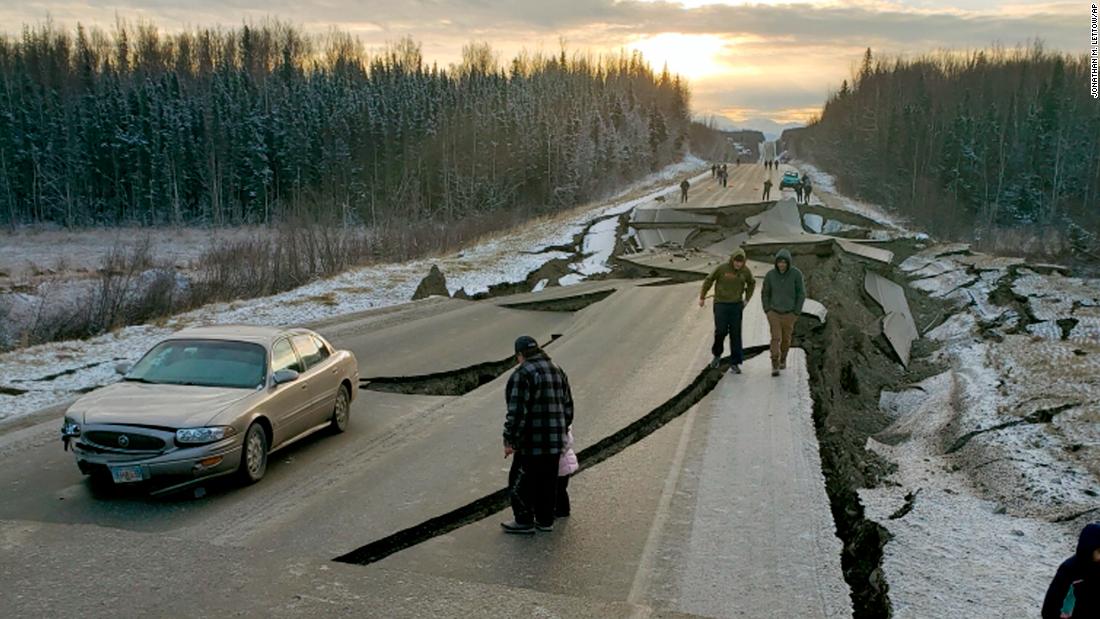
The state also experienced the second-largest earthquake to ever hit the US -- a 9.2-magnitude in 1964.
Friday's 7.0 magnitude earthquake near Anchorage is no surprise to experts. The state is located along the Pacific "Ring of Fire" and joins the Pacific and North American plates.
The area is marked by subduction zones, where two of the Earth's tectonic plates meet, according to Randy Baldwin, a geophysicist with the US Geological Survey.
One of the fastest-moving underwater tectonic faults in the world is in southeastern Alaska, according to the USGS.
"With a slip rate of more than 2 inches per year, this fault may be one of the fastest-moving strike-slip faults in the world," Baldwin said.
In comparison, the San Andreas fault in California slips about an inch to an inch-and-a-half each year, the USGS says.
Just in the last century alone, movement between the tectonic plates at the fault line has caused six earthquakes of magnitude 7 or greater.
"One of those earthquakes, a magnitude 7.8 earthquake near Lituya Bay, Alaska, in 1958, triggered a landslide that sent water 1,720 feet up an adjacent mountainside, one of the highest recorded run-ups of a tsunami," the USGS says.
And with big movement comes frequent tremors.
From Friday's quake to early Saturday morning, parts of Alaska experienced about 194 earthquakes, according to USGS.
"These numbers can change by the minute, people can be expected to feel aftershocks for some time," Baldwin told CNN.
And yet, Alaska is frequently overshadowed by another earthquake-prone state.
"California probably gets more media attention than Alaska due mainly to the population factor," Baldwin said. "Anchorage has a population of around 300,000, while there are numerous large population centers in California."
But, Baldwin said, while the whole of the contiguous US saw about 70 earthquakes with a magnitude of 4 or above in 2017, the eastern half of the Aleutian Arc and Alaska saw 192 of the same size.
No comments:
Post a Comment